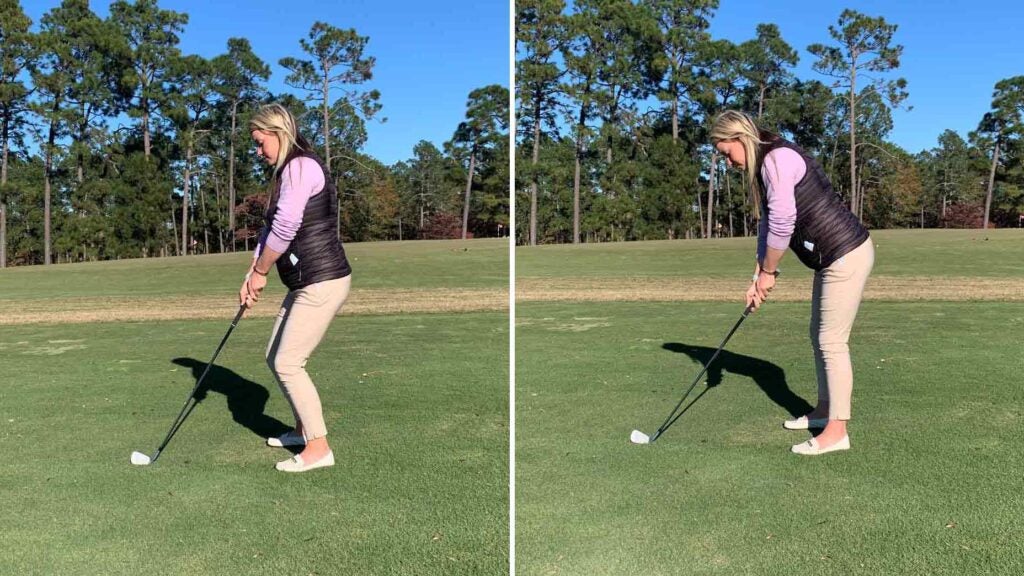Learning golf is exciting—but it’s also a sport that can test your patience. Many new players struggle not because they lack talent, but because they repeat small mistakes that quickly become bad habits. Whether you’ve just picked up your first club or have been practicing for months, knowing what these mistakes are (and how to fix them) can dramatically speed up your progress.
In this guide, we’ll explore the ten most common golf mistakes beginners make—and give you practical solutions to improve your game.
1. Gripping the Club Too Tightly
One of the most frequent beginner mistakes is gripping the golf club too tightly. Many players believe a firm grip gives them more control, but in reality, it restricts your swing and reduces club speed.
How to fix it:
Hold the club with relaxed pressure—imagine you’re holding a tube of toothpaste without squeezing any out. Your hands should feel secure but not tense. This light grip promotes a smoother, more natural swing and better shot consistency.

2. Poor Stance and Posture
A good golf swing starts from a solid foundation. Beginners often stand either too straight or bend excessively at the waist, throwing off balance and power.
How to fix it:
Bend slightly at the hips, keep your back straight, and flex your knees just enough to stay athletic. Weight should be evenly distributed on the balls of your feet. This setup helps you swing through the ball instead of over or under it.

3. Trying to Hit Too Hard
Golf isn’t about brute force. Many beginners swing as hard as they can, thinking power equals distance. The result? Poor contact and wild shots.
How to fix it:
Focus on rhythm, not strength. A smooth, controlled swing creates both distance and accuracy. Try the “80% rule”—swing at 80% of your maximum power and focus on solid contact. You’ll be amazed how much farther the ball travels.
4. Ignoring Alignment
Even if your swing is perfect, bad alignment sends the ball in the wrong direction. Most new golfers aim with their clubface but forget their feet, hips, and shoulders also guide the ball’s path.
How to fix it:
Pick a target line, then align your body parallel to it. Place a club or alignment stick on the ground during practice sessions to help train your setup. Proper alignment ensures your shots go where you intend.
5. Looking Up Too Soon
A common beginner reflex is to look up right after impact to see where the ball went. Unfortunately, lifting your head early causes thin shots or complete misses.
How to fix it:
Keep your eyes focused on the back of the ball until your follow-through is complete. Count “one-one thousand” after impact before looking up. This small discipline improves ball contact immediately.
6. Neglecting Short Game Practice
Many golfers spend hours driving balls at the range but ignore putting and chipping. However, around 70% of your shots happen within 100 yards of the hole.
How to fix it:
Dedicate equal time to practicing short game skills. Work on distance control, chip shots, and putting speed. Improving your short game can easily cut several strokes off your score without needing longer drives.
7. Overthinking the Swing
Golf is as mental as it is physical. Beginners often overload their minds with too many swing thoughts—grip, stance, follow-through—causing hesitation and inconsistency.
How to fix it:
Simplify your routine. Before each shot, focus on one key thought, such as “smooth tempo” or “finish high.” Keeping your mental checklist short leads to cleaner, more confident swings.
8. Playing the Wrong Equipment
Using clubs that don’t fit your height, swing speed, or skill level makes the game harder than it needs to be. Many beginners use old or mismatched sets that aren’t forgiving enough.
How to fix it:
Get fitted by a professional or at least check your club’s length, flex, and grip size. Beginner-friendly clubs with larger sweet spots (like game-improvement irons) help correct off-center hits and build confidence.
9. Forgetting Course Strategy
Beginners tend to aim directly for the flag every time, even when the risk outweighs the reward. Poor course management leads to unnecessary bogeys and frustration.
How to fix it:
Play smarter, not harder. Aim for safe zones, avoid hazards, and think one shot ahead. Sometimes, laying up short of a bunker or water hazard saves strokes in the long run. Golf rewards strategy as much as power.
10. Losing Patience Too Quickly
Golf is a game of learning, not instant perfection. Many new players quit or get discouraged after a few bad rounds, forgetting that even professionals hit bad shots.
How to fix it:
Set realistic goals—focus on improvement, not perfection. Celebrate small wins like fewer three-putts or consistent contact. Progress in golf happens slowly, but every round teaches something valuable.

Bonus Tip: Learn from Feedback
Every swing tells a story. Pay attention to your ball flight, divots, and feel at impact. Video your swing or take lessons with a coach to identify recurring mistakes. The best golfers aren’t mistake-free—they just correct them faster.
Conclusion
Every beginner makes mistakes in golf—it’s part of the process. The key is recognizing them early and adjusting before they become habits. Whether it’s your grip, alignment, or mindset, each fix moves you closer to a smoother, more consistent game.
Remember, golf isn’t about perfection—it’s about progress. Stay patient, keep practicing, and enjoy the journey. The more you learn to avoid these common golf mistakes beginners make, the more confident and rewarding your rounds will become.






.jpg)
.jpg)







